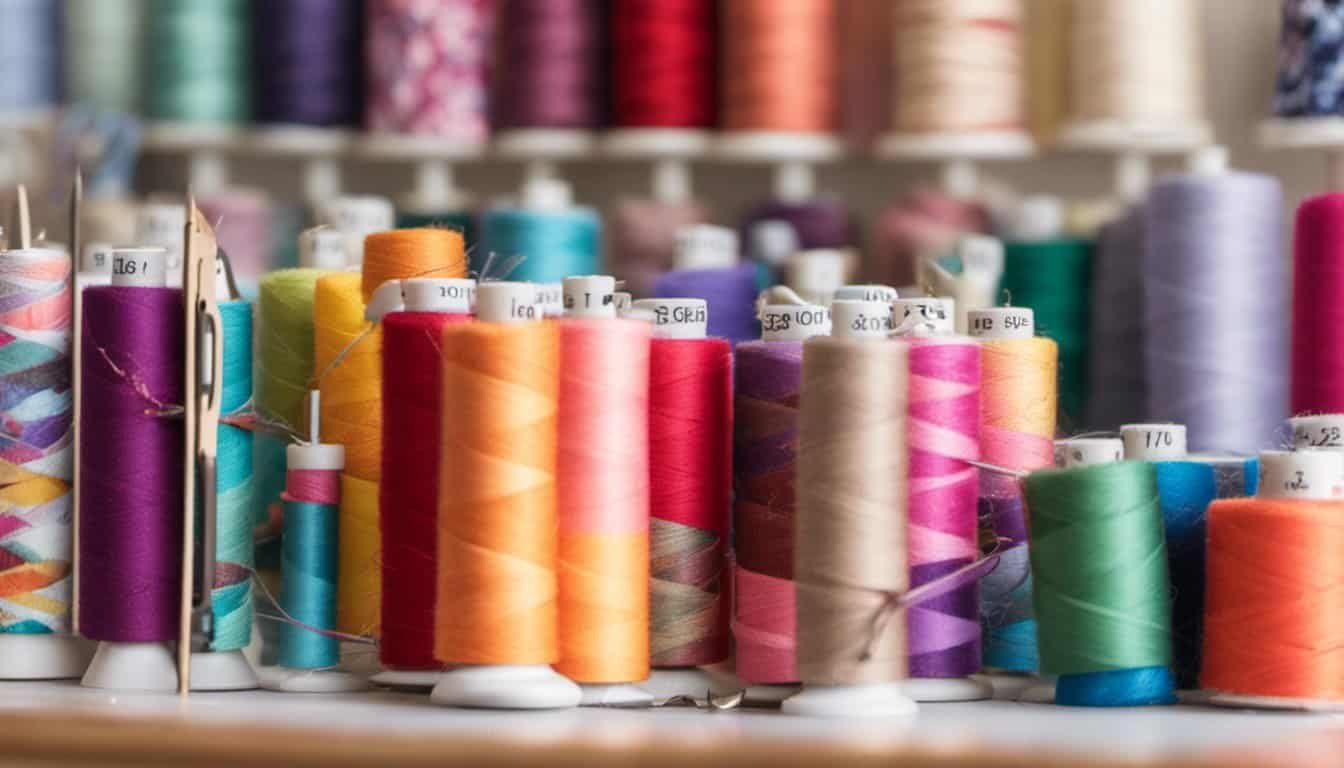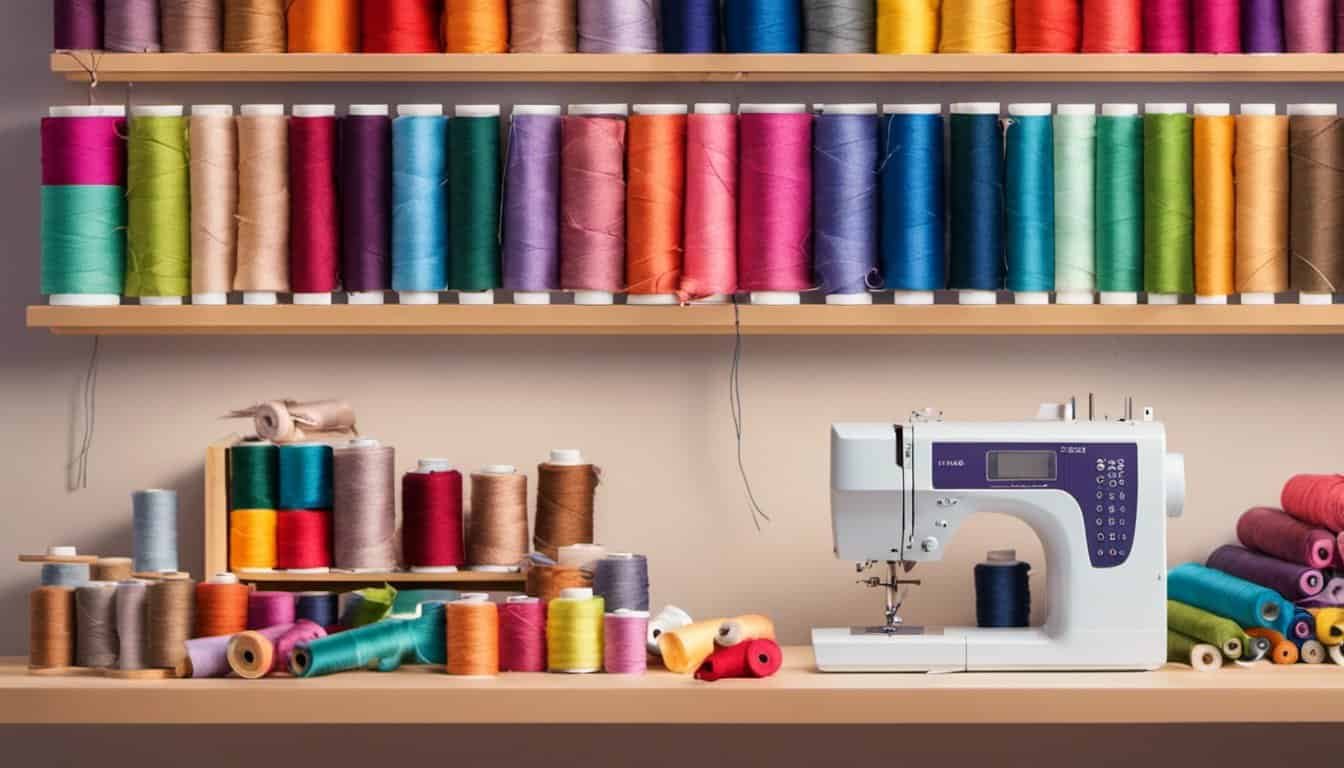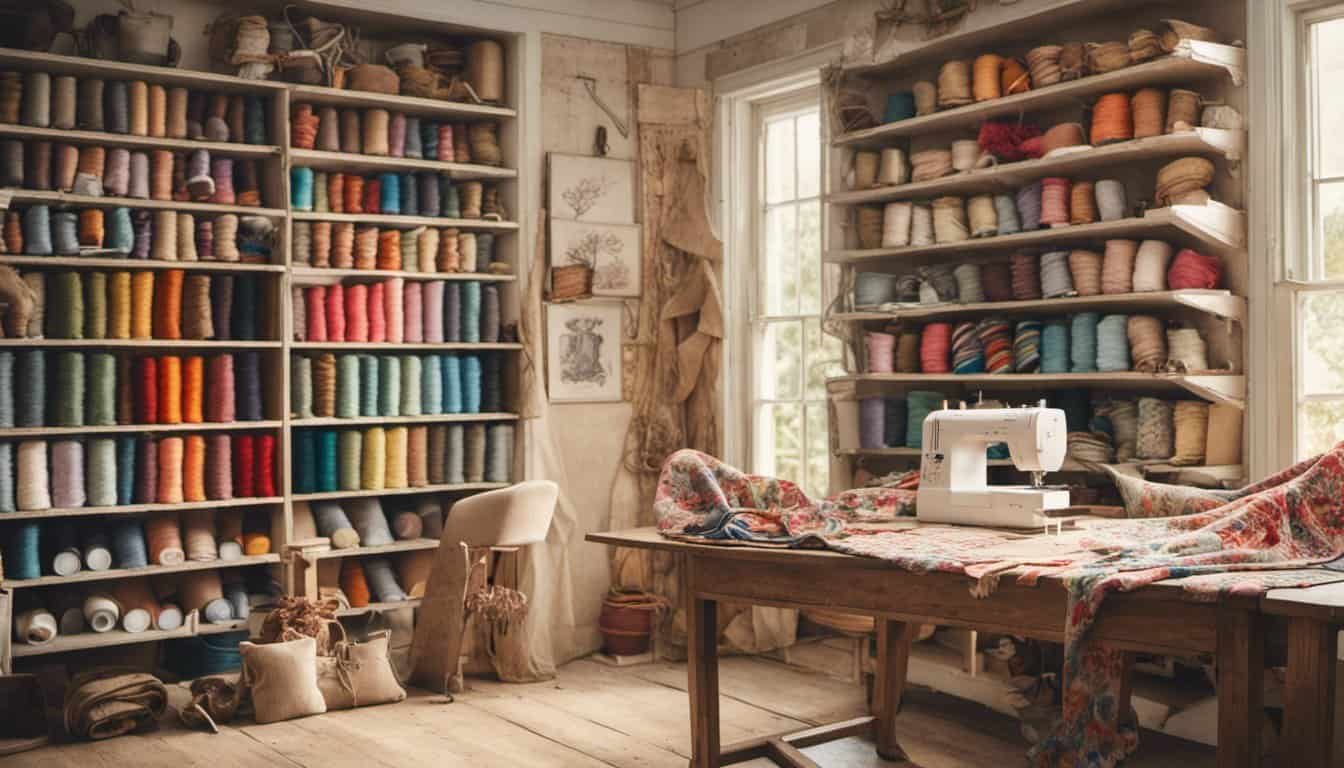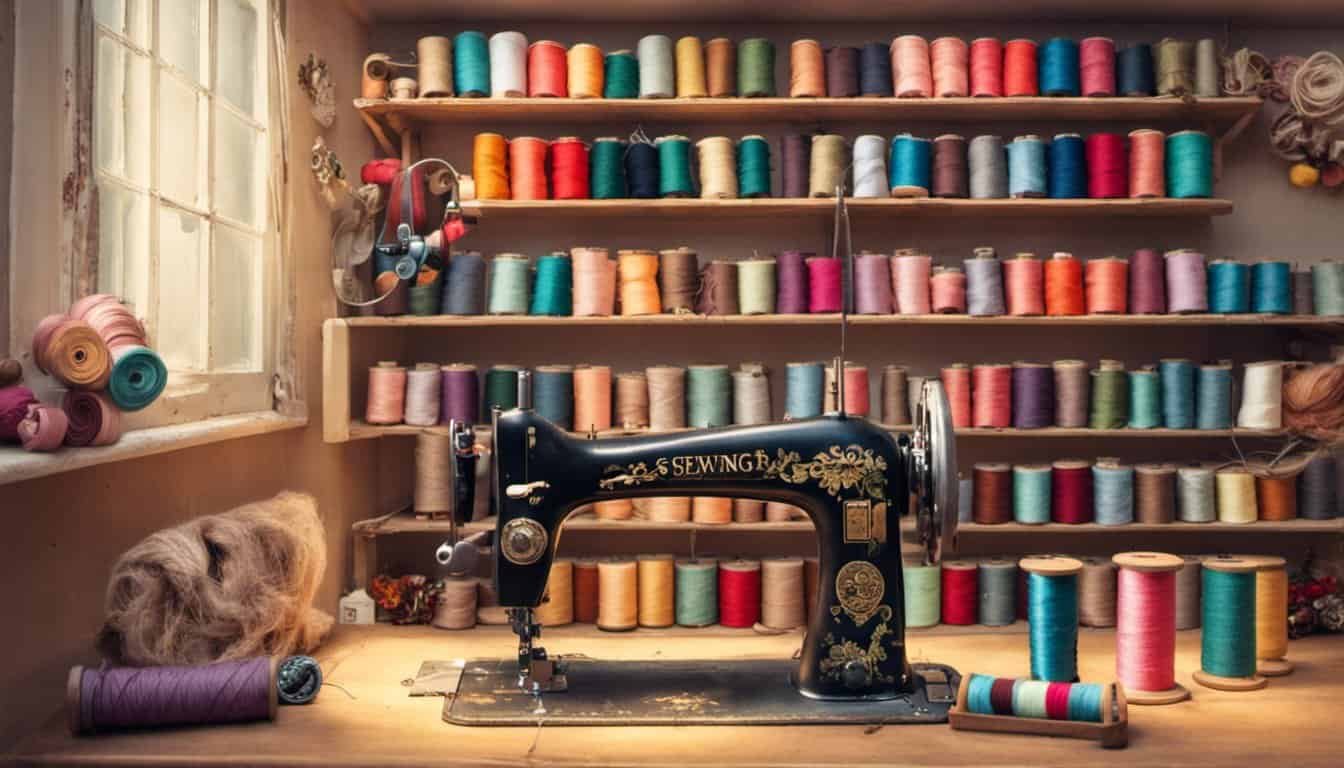As someone who loves to sew, I know how important it is to keep my sewing machine in good condition. Regular maintenance and tune-ups can help ensure that my machine runs smoothly and lasts for years to come. But, how much does a sewing machine tune-up cost?
The cost of a sewing machine tune-up can vary depending on a number of factors. Some of the key components that can impact the cost include the type of machine you have, the severity of any problems or issues, and the location of the repair technician. In this article, I’ll explore some of the factors that can impact the cost of a sewing machine tune-up and answer some common questions about this important maintenance task.
Key Takeaways
- The cost of a sewing machine tune-up can vary depending on factors like the type of machine, the severity of any problems, and the location of the repair technician.
- Regular maintenance and tune-ups can help ensure that your sewing machine runs smoothly and lasts for years to come.
- When deciding whether to repair or replace your sewing machine, consider factors like the age of the machine, the cost of repairs, and your overall sewing needs.
Understanding Sewing Machine Tune-Up
As a sewing enthusiast, I know how important it is to ensure that my sewing machine is in top condition. One of the best ways to do this is by getting a sewing machine tune-up. A sewing machine tune-up is a regular maintenance procedure that is done to keep your sewing machine running smoothly. In this section, I will share some insights on what a sewing machine tune-up entails and the cost of getting one.
What is a Sewing Machine Tune-Up?
A sewing machine tune-up is a maintenance procedure that involves cleaning, oiling, and adjusting the various parts of your sewing machine. During a tune-up, a technician will inspect your machine for any worn-out or damaged parts that need to be replaced. They will also check the tension, timing, and stitch quality of your machine to ensure that it is working correctly.
Why is Regular Maintenance Important?
Regular maintenance is essential to keep your sewing machine running smoothly. Without regular maintenance, your machine may start to develop problems such as skipped stitches, thread breakage, and tension issues. These problems can be frustrating and can affect the quality of your sewing projects. Regular maintenance can help prevent these issues and extend the lifespan of your machine.
How Much Does a Sewing Machine Tune-Up Cost?
The cost of a sewing machine tune-up can vary depending on the type of machine you have and where you live. On average, a sewing machine tune-up can cost anywhere from $75 to $100. This cost does not include any replacement parts that may be needed. Computerized embroidery machines may cost more to tune-up, with prices ranging from $100 and above.
It’s important to note that the cost of a sewing machine tune-up can vary from one repair shop to another. It’s always a good idea to shop around and compare prices before choosing a repair shop.
In conclusion, regular maintenance is essential to keep your sewing machine running smoothly. A sewing machine tune-up is a great way to ensure that your machine is in top condition. While the cost of a tune-up may vary, it’s a small price to pay to keep your machine running smoothly and extend its lifespan.
Key Components of a Sewing Machine
As someone who sews regularly, I know that understanding the key components of a sewing machine is essential in maintaining its function. Here are some of the most important parts that you should be familiar with:
Bobbin
The bobbin is a small spool that holds the thread on the underside of the fabric. It is essential in creating a stitch, and if it isn’t properly wound or inserted, it can cause a lot of problems.
Foot Pedal
The foot pedal is what controls the speed of the sewing machine. It is connected to the motor and allows you to start and stop the machine.
Stitch
The stitch is the basic unit of sewing. It is created by the needle passing through the fabric and looping the thread around the bobbin thread.
Replacement Parts
Sewing machines have many moving parts, and sometimes these parts break or wear out. It’s important to have access to replacement parts so that you can fix your machine when something goes wrong.
Bobbin Case
The bobbin case holds the bobbin in place and helps regulate the tension of the thread.
Presser Foot
The presser foot is the part of the machine that holds the fabric down as it is being sewn. It helps to keep the fabric from shifting and ensures that the stitch is straight.
Gears
Gears are used to transfer power from the motor to the moving parts of the sewing machine. They are essential in creating the proper stitch.
Bobbin Winder
The bobbin winder is used to wind thread onto the bobbin. It is an important part of the sewing machine, as without it, the bobbin would not be able to hold thread.

Embroidery Foot
The embroidery foot is a specialized presser foot that is used for embroidery. It holds the fabric down while the needle moves in different directions to create intricate designs.
Feed Dogs
The feed dogs are the teeth-like parts of the machine that move the fabric through the machine. They are essential in creating a straight stitch.
Hand Wheel
The hand wheel is used to manually move the needle up and down. It is useful when you need to make small adjustments to the stitch.
Shafts
The shafts are the metal rods that connect the gears and other moving parts of the sewing machine. They help to transfer power from the motor to the moving parts of the machine.
« Sewing vs Knitting vs Crocheting: Which is Right for You?
Where to Find Discount Sewing Machines and Accessories »
Understanding these key components of a sewing machine is essential in maintaining its function. Regular maintenance and tune-ups can help ensure that your machine runs smoothly and produces high-quality stitches.
Common Sewing Machine Problems
As someone who loves sewing, I know how frustrating it can be when your sewing machine starts acting up. Here are some of the most common sewing machine problems that you may encounter:
Skipped Stitches
One of the most common problems that sewers face is skipped stitches. This can happen when the needle fails to penetrate the fabric or when the bobbin thread doesn’t catch. Skipped stitches can be caused by a dull needle, incorrect needle size, or incorrect threading. To fix this problem, try changing the needle, re-threading the machine, or adjusting the tension.
Uneven Stitches
Another common issue is uneven stitches. This can happen when the top and bottom threads aren’t properly balanced. The tension may be too tight or too loose, or the needle may be bent. To fix this problem, adjust the tension or replace the needle.
Broken Threads
Broken threads can be caused by a variety of issues, including a dull needle, incorrect threading, or incorrect tension. To fix this problem, try changing the needle, re-threading the machine, or adjusting the tension.
Fabric Not Feeding
Sometimes, the fabric may not feed through the machine properly. This can be caused by a dirty or damaged feed dog, incorrect pressure foot, or incorrect stitch length. To fix this problem, clean the feed dog, check the pressure foot, or adjust the stitch length.

Thread Bunching
Thread bunching can happen when the tension is too tight or too loose. It can also be caused by a dull needle or incorrect threading. To fix this problem, adjust the tension, change the needle, or re-thread the machine.
Overall, these are just a few of the most common sewing machine problems that you may encounter. If you’re unable to fix the issue on your own, it may be time to take your machine in for a tune-up or repair.
Cleaning and Lubrication
When it comes to maintaining your sewing machine, cleaning and lubrication are two essential tasks that you should never forget. Regular cleaning will help keep your machine in good condition and prevent it from breaking down. Meanwhile, proper lubrication will ensure that all the moving parts of your machine are working smoothly.
Cleaning your sewing machine is a simple task that you can do on your own. First, unplug your machine and remove the needle, presser foot, and bobbin case. Use a soft-bristled brush to remove any lint, dust, or debris that has accumulated in your machine. You can also use a vacuum cleaner with a soft brush attachment to clean hard-to-reach areas.
After cleaning, you can apply a small amount of oil to the moving parts of your machine. Be sure to use the right type of oil for your machine. Check your machine’s manual to see which type of oil is recommended. Apply the oil sparingly, and wipe off any excess with a clean cloth.

If you’re not comfortable cleaning your machine on your own, you can take it to a professional for a cleaning and lubrication service. This service usually includes a thorough cleaning of your machine, oiling of all moving parts, and inspection of your machine’s overall condition.
Regular cleaning and lubrication are essential to keep your machine in good working condition. By taking good care of your machine, you can ensure that it will last for years to come.
Types of Sewing Machines
When it comes to sewing machines, there are a variety of types available on the market. Each type of machine has its own unique features and capabilities. Here are some of the most common types of sewing machines:
Mechanical Sewing Machines
Mechanical sewing machines are the most basic type of sewing machine available. They are operated manually and do not have any electronic components. These machines are the most affordable and are a great option for beginners who are just starting out with sewing.
Computerized Sewing Machines
Computerized sewing machines are more advanced than mechanical sewing machines. They are equipped with electronic components that allow the user to program the machine to perform a variety of different stitches and patterns. These machines are more expensive than mechanical machines, but they offer greater flexibility and precision.

Embroidery Machines
Embroidery machines are specialized machines that are designed specifically for embroidery work. They are equipped with a variety of different embroidery stitches and patterns, and can be programmed to create intricate designs and patterns. These machines are more expensive than standard sewing machines, but they offer a level of precision and detail that is unmatched by other types of machines.
Computerized Embroidery Machines
Computerized embroidery machines are similar to standard embroidery machines, but they are equipped with electronic components that allow the user to program the machine to perform a variety of different stitches and patterns. These machines are more expensive than standard embroidery machines, but they offer greater flexibility and precision.
Singer Sewing Machines
Singer is one of the most well-known brands of sewing machines. They offer a wide range of different machines, including mechanical and computerized sewing machines, as well as embroidery machines. Singer machines are known for their durability and reliability, and they are a popular choice among both beginners and experienced sewers.
Brother Sewing Machines
Brother is another popular brand of sewing machines. They offer a range of different machines, including mechanical and computerized sewing machines, as well as embroidery machines. Brother machines are known for their ease of use and versatility, and they are a great choice for both beginners and experienced sewers.
Janome Sewing Machines
Janome is a high-end brand of sewing machines that is known for its precision and quality. They offer a range of different machines, including mechanical and computerized sewing machines, as well as embroidery machines. Janome machines are more expensive than other brands, but they offer a level of precision and detail that is unmatched by other machines.

Cost Factors for Sewing Machine Tune-Up
When it comes to sewing machine tune-up cost, there are several factors that can affect the final price. Here are some of the most important factors to consider:
Type of Machine
The type of sewing machine you own can have a significant impact on the cost of a tune-up. For example, computerized embroidery machines tend to be more expensive to service than basic mechanical machines. This is because they have more complex components and require specialized knowledge to repair.
Age of Machine
The age of your sewing machine can also impact the cost of a tune-up. Older machines may require more extensive repairs, which can drive up the price. Additionally, if your machine is very old, it may be more difficult to find replacement parts, which can also increase the cost of repairs.
Condition of Machine
The overall condition of your sewing machine can also affect the cost of a tune-up. If your machine is in good condition and only needs a basic cleaning and adjustment, the cost will likely be relatively low. However, if your machine is in poor condition and requires significant repairs, the cost will be higher.
Location
The cost of a sewing machine tune-up can also vary depending on your location. In general, repairs tend to be more expensive in large cities and urban areas. If you live in a more rural area, you may be able to find a repair shop that offers lower prices.

Repair Shop
Finally, the repair shop you choose can also impact the cost of a tune-up. Some shops may charge more for their services, while others may offer lower prices. It’s important to do your research and find a reputable repair shop that offers fair prices.
Overall, the cost of a sewing machine tune-up can vary widely depending on a number of factors. If you’re on a budget, it’s important to shop around and compare prices from different repair shops. Additionally, it may be worth considering whether it’s more cost-effective to repair your machine or replace it with a new one.
To Repair or Replace
When faced with a broken or malfunctioning sewing machine, the question of whether to repair or replace it can be a difficult one to answer. There are a number of factors to consider, including the cost of repairs, the age and condition of the machine, and the sentimental value it may hold.
If your sewing machine is relatively new and in good condition, it may be worth considering repair as a first option. A simple tune-up can cost anywhere from $75 to $100, which is usually much less than the cost of a new machine. Additionally, if your machine has sentimental value, such as being passed down from a family member, repairing it may be the best option to keep that connection alive.
However, if your machine is older or in poor condition, it may be more cost-effective to replace it. In some cases, replacement parts may be difficult to find or cost-prohibitive, making repairs impractical. Additionally, if you find that you are frequently having to repair your machine, it may be a sign that it is reaching the end of its useful life and a new machine may be a better investment in the long run.

When deciding whether to repair or replace your sewing machine, it’s important to consider both the short-term and long-term costs. While repairing a machine may be cheaper in the short-term, if you find yourself having to repair it frequently, the costs can quickly add up. On the other hand, investing in a new machine may be more expensive upfront, but can save you money in the long run by avoiding frequent repairs and maintenance.
Ultimately, the decision of whether to repair or replace your sewing machine will depend on a variety of factors, including the cost of repairs, the age and condition of the machine, and your own personal preferences. By carefully weighing these factors and considering both short-term and long-term costs, you can make the best decision for your needs and budget.
Finding a Repair Technician
When my sewing machine needs a tune-up, I usually take it to a local sewing machine repair shop. However, finding a reliable and trustworthy technician can be a challenge. Here are some tips that have helped me find a good repair technician:
Ask for recommendations: I always start by asking friends and family for recommendations. If someone I know has had a positive experience with a particular technician or sewing machine service, I am more likely to trust them.
Check online reviews: I also check online reviews to see what other people are saying about local sewing machine repair shops. I look for shops with high ratings and positive reviews.
Look for authorized dealers: If my sewing machine is still under warranty, I make sure to take it to an authorized dealer for service. This ensures that the repair work is done by someone who is trained and certified to work on my machine.
Ask about pricing: Before I leave my sewing machine with a technician, I always ask about pricing. I want to make sure that I am getting a fair price for the work that needs to be done. Some shops charge a flat rate for a tune-up, while others charge by the hour.
Consider location: Finally, I try to find a repair technician that is located close to my home or work. This makes it easier for me to drop off and pick up my sewing machine without having to travel too far.
Overall, finding a good repair technician takes some research and effort, but it is worth it to ensure that my sewing machine is in good hands.
Frequently Asked Questions
What is included in a sewing machine tune up?
A sewing machine tune up typically includes cleaning, oiling, and adjusting the tension of your machine. The technician will also check for any worn or broken parts that may need to be replaced. Depending on the repair shop, additional services may be included in the tune up.

How much should I expect to pay for a sewing machine tune up?
The cost of a sewing machine tune up can vary depending on the repair shop and the type of machine you have. On average, you can expect to pay between $75 and $100 for a basic tune up. However, if your machine is computerized or a high-end brand like Elna, Pfaff, Bernina, or Viking, the cost may be higher, ranging from $150 to $250.
Is it worth getting my sewing machine tuned up?
Yes, it is worth getting your sewing machine tuned up regularly. A well-maintained machine will run more smoothly and last longer. Neglecting regular maintenance can lead to more serious problems down the line, which can be more expensive to repair.
How often should I get my sewing machine serviced?
It is recommended to get your sewing machine serviced at least once a year, even if it seems to be running fine. If you use your machine frequently or for heavy-duty projects, you may want to consider getting it serviced more often.
Can I do a sewing machine tune up myself?
While some basic maintenance tasks like cleaning and oiling can be done at home, it is generally recommended to leave more complex tasks to a professional. Attempting to do a tune up yourself can lead to further damage to your machine.
Where can I find a reliable sewing machine repair shop?
You can find a reliable sewing machine repair shop by doing an online search for “sewing machine repair shops near me.” You can also ask for recommendations from friends or family members who sew. If you bought your machine from an authorized dealer, they may also offer repair services. Be sure to read reviews and check the repair shop’s credentials before taking your machine in for service.


















